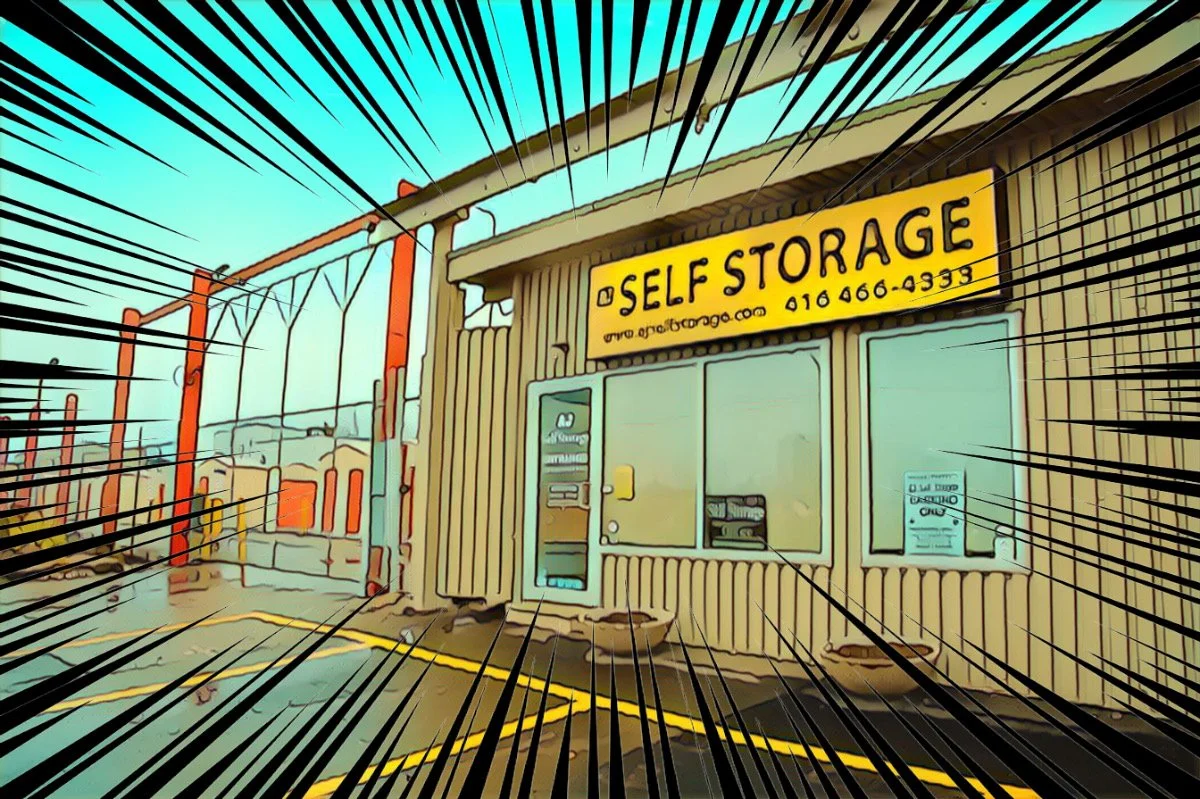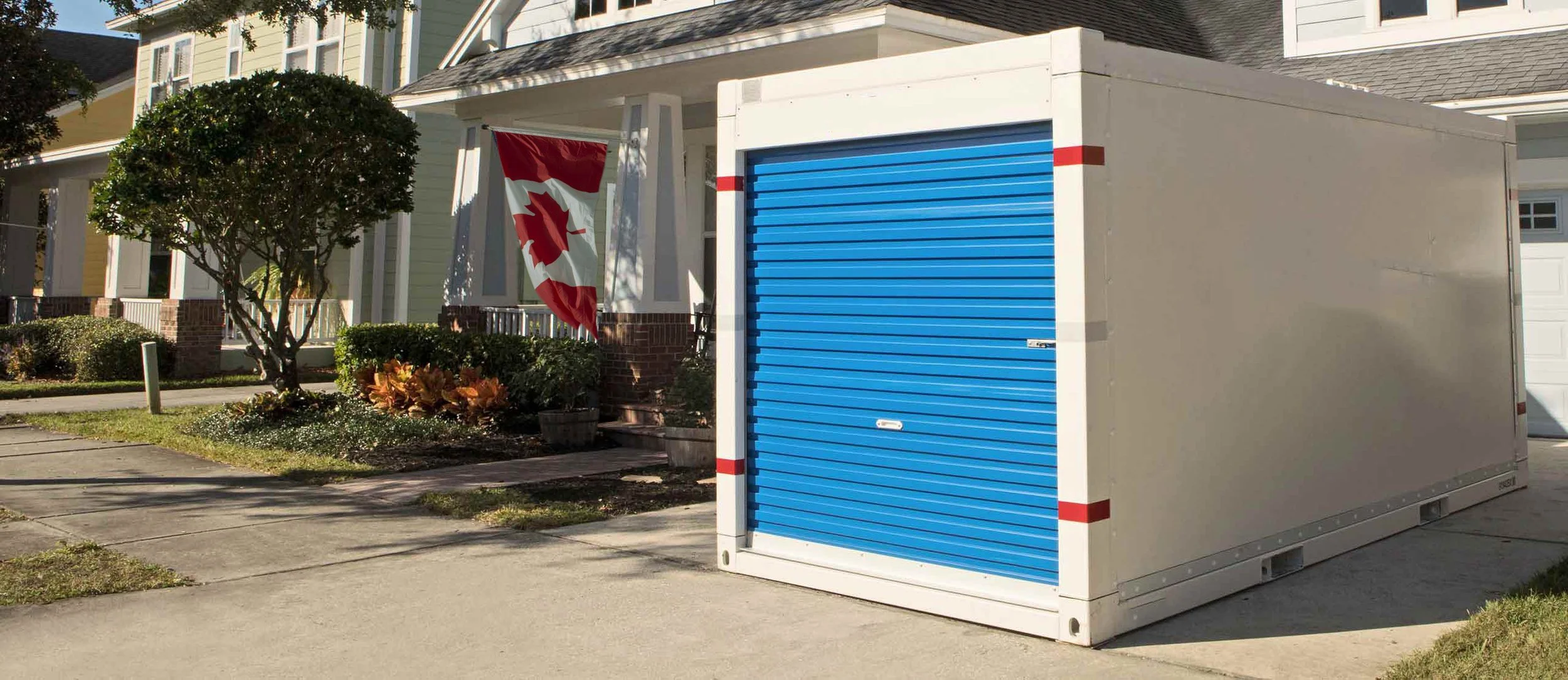
Search for Self Storage Near Me
Reserve a storage unit in minutes
How To Rent Self Storage
Some things in life can be very difficult: deciding on which college to attend, planning a wedding, trying to get the cap off a childproof container, etc. Fortunately, renting self storage unit doesn't fall in this category. In fact, it's an extremely easy thing to do. Here is an outline of how to rent self storage.
First, just like any financial decision, you need to set your budget and know what you can afford. Self Storage prices can vary greatly depending on the size of the unit and what types of features you are looking for. For instance, you may just need the standard, old fashioned unit with no frills and drive-up access from the outdoors. Even with these unit types, you'll have a security gate for some protection. On the other hand, you may be storing valuable items that require climate control and are heated in the winter and air conditioned in the summer, located within the walls of an exterior building for extra protection and security. Other factors can include personal preferences, such as whether it's an older or brand new facility.
Location
Location will almost always be a factor for anyone, and you'll probably want to find a self storage location in your area that's relatively close by. Google Maps is a great place to start your search, with the added benefit of being able to see the best and the worst reviews of each facility to help you make your decision.
Self Storage Unit Size
Once you've decided on location and features, you’ll need to determine your size. You can always upsize or downsize later if you need to remove items from storage or add more. For each room in your house, you will typically need 25 square feet. For example, a bachelor-sized apartment will usually fit in a 5x5, depending on the particular bachelor of course. An apartment with one common area and one bedroom will more often need a 5x10, but again that is a general estimate and may or may not apply to your specific situation. The self storage provider will show you the unit you need and allow you to can inspect it before you rent it out.
Renting Your Unit
After you've settled on the right size and location, there are couple things to prepare. When you arrive at the storage facility, you’ll be asked to provide your drivers license, credit card, and to sign the rental agreement. Rental agreements are either setup with a month-to-month agreement or a four-week agreement. If this is important, make sure you ask the facility staff which one it is. And boom. It’s yours! You can move your stuff in immediately.
Insurance
If you have your own home or apartment insurance and can produce proof that it covers stored items, you can often request to have the mandatory storage insurance waived. Now the only thing left is to get your stuff from your home or apartment and into the unit. That's what friends and family are for :)
On This Page Show
Average Price of a 10x10 Unit By City for April 2023
In March, the average price of a 10x10 self storage unit varies across major Canadian cities. Toronto's average price stands at $284, while Montreal offers slightly lower rates at $249. Vancouver has the highest average cost at $392, and Calgary's average price is close to Toronto's at $285. Explore your options and choose the best storage solution for your needs in these bustling urban centres.
How Self Storage Works
Self storage is a facility where individuals and businesses can store their belongings. These units are typically rented by the month and are perfect for storing items that you do not have room for in your home or office. Self storage facilities have been around since the late 1950s, and their popularity has continued to grow over the years. In this document, we will explore how self storage works, from how facilities make money to how consumers use them.
The History of Self Storage
The history of self storage can be traced back to the late 1950s, when a man named Robert D. Klein rented out unused space in a warehouse he owned in Los Angeles. This idea quickly caught on, and self storage facilities began popping up all over the country. Today, there are over 50,000 self storage facilities in the United States alone.
Self storage facilities have evolved to include storage for RVs, trailers, boats, and also portable storage and valet storage. Most facilities are climate-controlled to protect stored items from extreme temperatures.
PRO TIP
Boxes and a lock for rented self storage units are the most forgotten items when renting. Remember to bring or purchase storage supplies before you rent.
What is A Self Storage Facility
A self storage facility is a place where people can store their belongings. The facility is occasionally climate-controlled and has security features like cameras and gates. the main purpose of self storage to provide space to consumers who don't more belongings than space.
How Self Storage Makes Money
Self storage facilities typically charge by the square footage of space rented, either by the month or year. The price per square foot of storage space can vary greatly but is usually cheaper than the cost of upgrading your apartment or home because you don't have to pay for water or electrical facilities.
Some facilities charge based on the month and others charge on a 4 week basis. If you are only staying for the short-term, there is typically no difference in price. However, if you are staying for years, the monthly-basis is cheaper because it ends up in one few payments every 4 years (shhh don't tell anyone)
If you fail to make a payment , the storage company has the right to auction off your belongings to the general public. Self storage providers prefer not to tell your belongings. They don't make much money from it. The reason they do it is that it is an efficient way to clear the space so they can re-rent it to a paying customer.
Some storage service, like valet storage, may be charged by the number of items stored.
When To Use Self Storage
Consumers use self storage for a variety of reasons. Some may be going through a divorce and need a place to store their belongings until they can find a new place to live. Others may be in the process of moving and need somewhere to keep their belongings until they're settled into their new home. Typically self storage renters fall into one of 5 categories
Moving
Renovation
Baby
Divorce
Death
In conclusion, self storage is a great way to store your belongings if you are in-between homes or just need some extra space. It is important to do your research before renting a unit so that you know what size you need and how long you'll need it. Use our self storage search to find the right storage for you.
Alternatives to Self Storage
Self storage facilities are the most common type of storage in the US and Canada, but you have alternatives that may suite your needs better.
Portable Storage
Portable storage is a newer option that has become popular in recent years. With this type of storage, you rent a storage container that is delivered to your home or business. You then have a certain amount of time to load it up and once you are finished, the company will come and pick it up and store it for you.
Valet Storage
Valet storage is the ultimate in service. Your service provider will come to your home to pick up your items and store them for you. They will also bring the storage back to you when you need it. This service is great for people who have a lot of stuff or who don't have the time to deal with self storage.
It's important to pick the right storage option for you. use our self storage search to find self storage, portable storage, and valet storage options.
-
Using a self storage unit isn't just for when you've collected too much stuff or when you're in between residences. It's also a valuable tool when it comes to selling your home because it helps you stage the home to get the maximum impact on potential buyers. Staging your home isn't 100% necessary of course, but in today's real estate climate it might be a huge help. According to the National Association of Realtors Profile Home Staging Report, the average staged home spends 23 days on the market, vs 40 days for an unstaged home.
Put everything in storage.
When we say everything, we mean almost everything. If it isn't absolutely necessary for your day-to-day survival until you sell your home, get it out of the home and into storage. If you don't have the time to load it all up and transport it then you should consider portable storage or valet storage options. One way or another, you want your home to be as uncluttered as possible, and that can mean much of the furniture too.
Hire a contractor to touch up those languishing broken items.
Don't adopt the attitude that something that needs repair will be the new owner's problem, or you may not find a new owner. Always understand that any money you spend on the right things when preparing to sell your home is an investment that will allow you to maximize your selling price. Every little thing that is a potentially inherited problem from new owners will be magnified in their eyes at the same time you're minimizing it in your mind.
Paint everything in neutral colours.
No one wants to paint their home just to move out of it, but you can believe that it will make a big difference to a buyer's perception. This goes hand in hand with putting your things in storage - you want the home to be as generic as possible. So in addition to removing the photos of your children from the walls and putting that unique piece of furniture that no one else would want in storage, you also want neutral colours throughout the house. Buyers want to imagine the home being their clean palette to work with, not see what your vision of it was.
Hire a staging company.
Hiring a staging doesn't cost that much relative to the value they offer. They know all the little tips and tricks to visually attract buyers, and will make your home look like a million bucks, something out of a magazine. Why do you think fancy restaurants display the food so beautifully on the plates that are brought to you, complete with garnishment that gets thrown out afterward? Because visual appeal sells.
Hire a realtor to help with the process.
In addition to a staging company, they can give you advice that you wouldn’t have thought of that will help you get a higher price for your home, and often they bring staging companies in for you.
Perform a pre-inspection on the home.
This is another point that many sellers will either not think of or not want to spend money on, and many realtors may not suggest it either. Smart realtors will, however. A pre-inspection serves two purposes. First, it's letting the potential buyers know that they aren't going to inherit a bunch of problems, which gives them more confidence to buy. Second, it will tell you anything that does need to be fixed in order to secure a sale. Because if the buyer does an inspection and finds the issues, they'll think you were being deceitful about them and are likely to move on.
-
Self storage units are a great way to store your belongings when you are short on space. However, many people are unsure if their items are insured while in storage. In this article, we will answer that question and more! We will explain what self storage is, what self storage insurance is, and why renters need it. We will also provide tips on how to minimize your risk and protect your belongings while in storage.
What is self storage insurance?
Self storage insurance is a type of insurance that covers the belongings stored in a self storage facility. Each tenant is responsible for their own belongings and must purchase insurance in order to protect them and the facility they store their belongings in. This insurance is separate from the insurance that covers the self storage facility itself. Self storage insurance is offered through the storage provider and is usually a small amount like $10 or $20 a month. If something should happen to your belongings there is a deductable as well as a maximum amount you can claim on your insurance, like $5000.
Why do renters need it?
As mentioned above the self storage facility has its own insurance, but this does not cover the belongings in your storage unit. If something should happen, like a theft or a flood, tenants would contact their self storage insurance provider either directly or through their storage provider, but the storage facility would not replace the value of their belongings. The renter's belongings are not covered under the facility insurance.
How to minimize it?
There are two things renters can do to minimize the cost of their self storage insurance.
If you have insurance on your house or apartment, this will usually cover the replacement cost of your belongings when they are in self storage since they are deemed 'temporarily away from your home'. However, you will need to provide proof that you have insurance by bringing a copy of your policy. Self storage providers are very strict about letting renters in the facility without insurance.
The second is to only rent the space you need. insurance can sometime be priced based on the square feet you occupy. For example, a small 5x5 unit, which is 25 square feet, can sometimes cost less to insure than a 20 x 20, which is 400 square feet.
If you are storing things of value, it is always better to err on the side of caution and get a storage unit that is just big enough for what you are storing. This will minimize your insurance costs as well as your storage costs.









